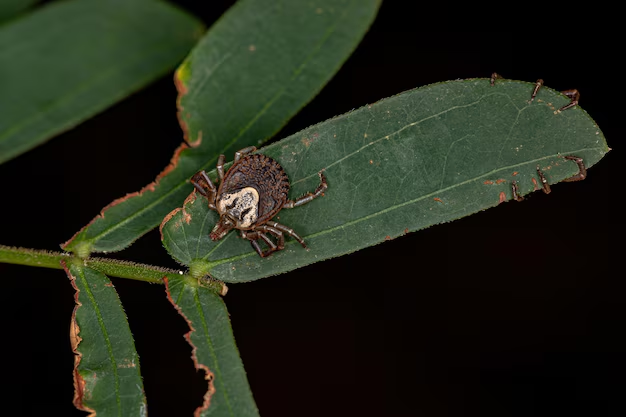Understanding Ticks and Lyme Disease: What You Need to Know
Every year, as the weather warms and outdoor activities become more frequent, awareness of Lyme disease and its carriers becomes essential. Lyme disease, a tick-borne illness, can have serious health implications, prompting many to wonder, "Which ticks should I be cautious of?" Let's delve into the intricacies of ticks, focus on those known to carry Lyme disease, and explore prevention strategies and critical insights about this widespread condition.
What is Lyme Disease?
Lyme disease is an infectious disease caused by the bacterium Borrelia burgdorferi. It is primarily transmitted to humans through the bite of infected ticks, notably the black-legged tick. The symptoms can range from mild to severe, influencing various bodily systems and often causing fatigue, flu-like symptoms, joint pain, and cognitive difficulties.
Early Symptoms of Lyme Disease
- Fever and chills
- Headache
- Muscle and joint aches
- Swollen lymph nodes
- Erythema migrans (a distinctive skin rash resembling a "bull's-eye" often appears 3-30 days post-bite)
Why is Lyme Disease a Concern?
Lyme disease, if not promptly addressed, can progress to more severe stages, impacting the heart, nervous system, and joints. Understanding the specific tick species that carry this disease plays a crucial role in prevention and early detection.
Ticks: The Main Culprit
Ticks are small, spider-like creatures that feed on the blood of animals and humans. Not all ticks bite humans, and fewer still are carriers of Lyme disease. The most notorious among them is the black-legged tick. But there's more to the story.
Understanding Different Tick Species
Black-legged Tick (Ixodes scapularis)
- Common Name: Deer Tick
- Regions: Predominantly found in the northeastern, north-central, and northwestern United States.
- Characteristics: Dark brown to black in color, with a prominent dorsal shield.
- Hosts: Often feeds on deer, hence the name.
The black-legged tick is the primary carrier of Lyme disease in the eastern U.S. It's known for its broad range of hosts, including humans, and its lifecycle stages (larvae, nymph, adult), all capable of transmitting Lyme disease.
Western Black-legged Tick (Ixodes pacificus)
- Regions: Primarily found along the Pacific coast, from California to British Columbia.
- Characteristics: Similar in appearance to its eastern cousin but occupies different habitats.
Other Ticks
While the following ticks are not typically associated with Lyme disease, awareness is still key:
- Lone Star Tick (Amblyomma americanum): Not a carrier of Lyme disease but can transmit ehrlichiosis and can cause a meat allergy.
- American Dog Tick (Dermacentor variabilis): Known for transmitting Rocky Mountain spotted fever.
How Ticks Transmit Lyme Disease
Tick transmission occurs through a biting process that allows bacteria to move from tick saliva into the host's bloodstream. For Lyme disease, a tick must be attached for at least 24-48 hours to ensure transmission, emphasizing the importance of early detection and removal.
Transmission Stages
- Emergence: Ticks latch onto hosts during early spring and late summer.
- Feeding: They draw blood over several days, during which transmission of any bacteria may occur.
- Detachment: Following feeding, ticks eventually drop off their hosts.
Reducing Your Risk: Prevention and Protection
Understanding tick behavior and environmental preferences can assist in avoiding bites. Here are some practical prevention tips for reducing your risk of encountering these critters.
Smart Outdoor Practices
- Clothing: Wear long sleeves, pants, and light colors which make it easier to spot ticks.
- Footwear: Tuck pants into socks or boots.
- Stay on Paths: Avoid wooded, brushy, or grassy areas with high tick populations.
- Repellents: Use EPA-approved insect repellents containing DEET or permethrin.
Home and Yard Management
- Landscaping: Trim grass and remove leaf litter where ticks may reside.
- Fencing: Create physical barriers to wildlife like deer which carry ticks.
What to Do If You Find a Tick
Prompt removal is critical if a tick is spotted. Here’s how to do it safely:
- Use Tweezers: Fine-tipped tweezers are ideal for grasping the tick as close to the skin's surface as possible.
- Pull Upward: Apply steady, even pressure; avoid twisting or jerking.
- Clean the Area: Wash the bite area with soap and water or use alcohol.
- Monitor: Observe the site for signs of rash or prolonged symptoms.
Living with Lyme Disease: Know the Next Steps
If Lyme disease is suspected, early intervention and appropriate medical consultation are essential. Here’s more information on understanding and managing Lyme disease from a diagnosis perspective.
Recognizing Complications
Long-term complications of untreated Lyme disease can include:
- Chronic joint inflammation (Lyme arthritis)
- Neurological symptoms such as Bell's palsy
- Cognitive issues like memory problems
- Heart rhythm irregularities
Seeking Medical Consultation
Speak with healthcare providers for a diagnosis if you observe any of the symptoms mentioned above, especially after time spent in tick-prone areas. Remember, not all rashes or flu-like symptoms equate to Lyme disease, but professional evaluation is crucial for peace of mind and health.
Key Lessons in Lyme Disease Prevention and Tick Awareness
Our exploration of Lyme disease, ticks, and prevention underscores a vital message: awareness is power. Knowing which ticks to watch for, understanding how to effectively prevent bites, and being proactive about potential symptoms are indispensable tools in keeping yourself and your loved ones safe. Prioritize outdoor safety and maintain vigilance in environments where ticks thrive.
Quick Takeaways 📝
- Ticks and Lyme Disease: Not all ticks carry Lyme disease. Focus on black-legged ticks if you're in risk zones.
- Early Symptoms: Be mindful of flu-like symptoms and signature rashes after potential exposure.
- Prevention Above All: Embrace smart practices & repellents while outdoors.
- Immediate Action: Remove ticks swiftly and cleanly to mitigate infection risk.
- Consultation Matters: Always seek professional advice if Lyme disease is suspected.
Stay informed, stay prepared, and enjoy the great outdoors with confidence! 🏞️
